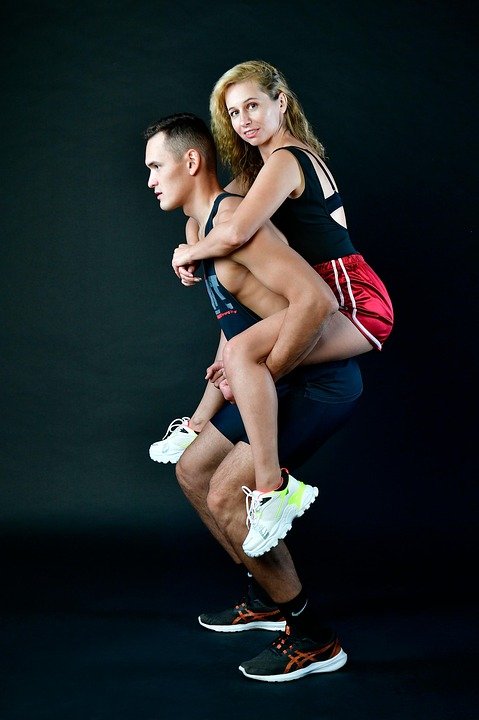Psychological studies show that our motivation is strongest when three needs are met: autonomy, competence, and connection. Group fitness, by nature, fulfills those needs in addition to providing you tangible results and benefits. Surrounded by peers, encouragement, and a sense of accountability, participants tap into the psychology of belonging. Suddenly, the effort isn’t just about burning calories; it’s about being part of something bigger.
While training solo builds discipline, training in a group taps into something deeper: the innate human drive to rise to the level of those around us. Group fitness classes harness social psychology, through energy, accountability, and collective intensity, to unlock performance you might not reach alone.
Your energy to hit the gym is flatlining, your routine is getting more stale by the day, and most importantly, your results have plateaued, so you have officially decided to succumb to all of the hype, and attend a local group fitness class at one of the big boutique gyms in your area. Here comes the most difficult part: how do I know which classes are for me?
Finding the group fitness class experience that works for you is truly the hardest part because you want to find the perfect fit that works for your schedule, your budget, and your goals. Like Cinderella and the glass slipper, but for athletes.
Although I have not covered them all, I wanted to give you a general overview of some of the heavy hitters in the group fitness industry right now, so you have somewhere to start.
Barry’s:
Website: Barrys.com
Founded in 1998 in West Hollywood, California by Barry Jay, John Mumford, and Rachel Mumford
Summary: High-intensity interval training (HIIT) classes in a “Red Room” setting — dark studio, red lights, loud music. Classes mix treadmill/cardio intervals + strength training. Fast-paced with minimal rest periods.
Class Length: 50 minutes
Ideal for: Athletes and fitness enthusiasts seeking intense cardio and strength workouts.
Difficulty: 5/5
Cost: Membership plans vary by market and location, but there are monthly memberships in addition to class packs of 10 and 20 classes. Drop-in/ single class rate is about $30, depending on the studio.
Location: Over 90 studios globally, across 15 countries, with new U.S. cities planned and growing throughout the year.

Solidcore:
Website: solidcore.co
Founded in November 2013 by Anne Mahlum. First studio in the Adams Morgan neighborhood of Washington, D.C.
Summary: Full-body strength training classes using a custom reformer-style resistance machine; time-under-tension with focus on muscle fatigue.
Class Length: 50 mins
Ideal for: Those desiring a challenging, low-impact strength workout targeting muscle endurance.
Difficulty: 4/5
Cost: Class packs available in addition to monthly memberships that allow unlimited access. Drop-in rate is between $35-$45 per class.
Location: There are over 150 studios in the U.S.

F45:
Website: f45training.com
Founded in Australia
Summary: Branded as a “functional 45” minute workout, it focuses on group training combining cardio, resistance, and hybrid days. Designed to accommodate different fitness levels, with trainers in class to guide, modify, and correct form.
Class length: 45 mins.
Ideal for: Those looking for varied, team-based workouts with a focus on functional movements.
Difficulty: 4/5
Cost: Typical range for unlimited membership is somewhere between $140–$300/month in many U.S. locations. There are class packs available and drop-in or single class cost tends to be under $30, depending on the studio.
Location: Over 800 studios in the U.S. and present in over 60 countries.

OrangeTheory Fitness:
Website: orangetheory.com
Founded in 2010 in Fort Lauderdale, Florida by Ellen Latham, Jerome Kern, and David Long.
Summary: Workouts mix cardio (treadmill, rowing) and strength training, usually in intervals. Classes use heart-rate monitoring and data tracking to help participants stay in target zones (especially the “orange” zone).
Class Length: 60 mins.
Ideal for: Individuals aiming to learn basic technique, improve endurance, strength, and power with personalized intensity levels.
Difficulty: 3/5
Cost: Membership plans at OTF work in tiers (basic, elite, or premier) with drop-in classes hovering around $35, depending on the location and market.
Location: Over 1400 studios in the United States, in addition to global locations in over 20 countries.

SoulCycle:
Website: soul-cycle.com
Founded in 2006 by Elizabeth Cutler, Julie Rice, and Ruth Zukerman in New York City. The first studio opened on the Upper West Side of Manhattan.
Summary: Primarily indoor cycling (“spin”) classes with high energy, heavy music, dim lighting, motivational coaching. Bikes are stationary; riders often use hand weights and do core work, stretching.
Class Length: Standard ride length is about 45 minutes. There are 30-minute classes (“Soul30”) in many locations. Special/longer rides (60-90 min) occasionally offered.
Ideal for: Individuals seeking a full-body cardio workout with a motivational environment.
Difficulty: 3/5
Cost: Class packs available in addition to subscription style memberships that give riders unlimited access. Drop-in rate varies from $35-$45 per class.
Location: There are about 60 studios in the U.S. and have expanded to Canada and the UK.

Rumble:
Website: rumbleboxinggym.com
Founded in 2017 in New York City.
Summary: In this high-energy, club-like atmosphere, Rumble is a boxing based HIIT class, utilizing punching bags, dumbbells, and cardio conditioning.
Class Length: 45 mins
Ideal for: Fitness enthusiasts interested in boxing techniques integrated with strength conditioning.
Difficulty: 4/5
Cost: Class packs available in addition to monthly memberships that allow unlimited access. Drop-in rate is between $35-$45 per class.
Location: There are over 100 studios in the U.S, with more than 385 licensed locations across four countries.

7 Steps You Need To Take To Find The Perfect Group Fitness For You
There are many amazing group fitness options, even local options provide some amazing workouts and camaraderie, but these are a few of the names that you’ll hear most often. Although it’s easy to feel overwhelmed with the amount of choices and decisions, here is an easy path to success in finding the class that works for you.
Step 1: Identify Your Primary Goal
Decide what you want to achieve: fat loss, strength gain, endurance, muscle toning, stress relief, or community/connection.
- Strength & muscle endurance: Solidcore, Barry’s
- Cardio/endurance: SoulCycle, Orangetheory
- Functional fitness & variety: F45
- Boxing skills + full-body conditioning: Rumble
Step 2: Assess Your Current Fitness Level
Be honest about your experience and capacity. Some classes are high-intensity and fast-paced:
- Beginner-friendly: Orangetheory (customizable intensity), SoulCycle
- Intermediate/Advanced: Barry’s, Solidcore, Rumble, F45
- If you’re new to fitness, look for studios offering beginner or foundation classes.
Step 3: Evaluate Class Format & Environment
Consider what motivates you: music, energy, coaching style, group size.
- Music-driven, high-energy: SoulCycle, Barry’s
- Data-tracking & structured: Orangetheory
- Small group strength-focused: Solidcore
- Boxing-inspired: Rumble
- Variety & team-based HIIT: F45
Step 4: Check Practical Factors
- Location & accessibility: Closest to home/work?
- Schedule: Can you commit to classes regularly?
- Cost: Drop-in vs membership; compare value per month/class.
- Membership flexibility: Packages, unlimited options, or per-class pricing.
Step 5: Try Intro or Trial Classes
- Most studios offer discounted first-class experiences or trial packs.
- Attend multiple styles if possible to see which environment and workout style you enjoy most.
Step 6: Consider Long-Term Motivation
- Ask yourself: Will I enjoy this consistently?
- Social connection often boosts adherence: studios with strong community aspects (SoulCycle, F45, Orangetheory) can improve consistency.
Step 7: Make a Choice and Track Progress
- Pick a studio or style that aligns with your goals, fitness level, and lifestyle.
- Track your progress—both physical results and enjoyment—so you can adjust if needed.
With that said, scope out the scene in your local market, head into the studio and sign up for a trial class (many brands will offer you a free introductory class before signing up) and see the vibe in person. My advice is always, in the gym and in life, start before you’re ready. As adults, we tend to stay in environments where we are constantly comfortable and high-achieving, but sometimes these experiences allow us to stop seeing new things as a “challenge”, and start seeing them as an “opportunity”.
This post is brought to you by: Source link
How to Choose the Best Group Fitness Classes That’s Right For Your Goals, 2025-09-30 13:02:00
















